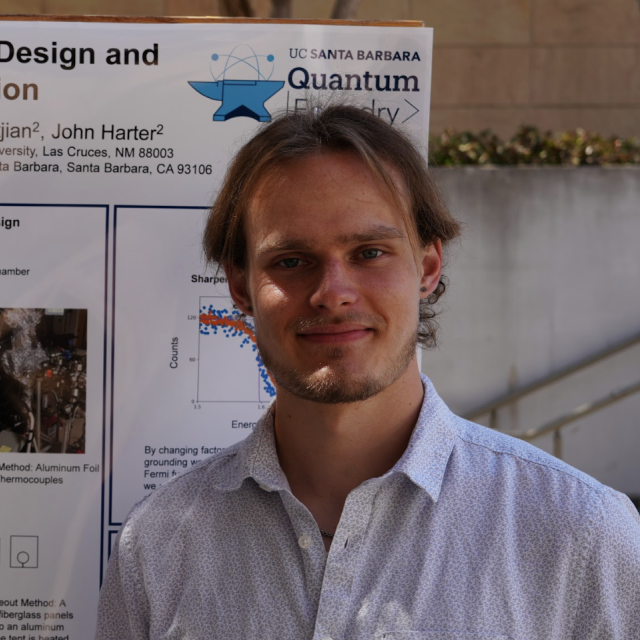
Ethan Cichon
Major: Physics
Mentors: Ruben Saatjian, Professor John Harter
ARPES System Design and Calibration
Angle-Resolved Photoemission Spectroscopy (ARPES) is a spectroscopic technique used to measure the energy and momentum of photoelectrons. This is used to reconstruct the momentum space and the band structure of a material, which tells us about material properties like superconductivity and topological states. To get the ARPES system to a point where we can run experiments, there are a few things we must consider. First, ARPES requires ultra-high vacuum (UHV). To get the system to UHV, it must be ‘baked’ at 150 degrees celsius so the chamber can outgas. In the past, the Harter lab has done this with aluminum foil and thermocouples, but this summer we modeled and designed a bakeout tent to make the process more efficient. Next, we also need to make sure the energy and momentum resolution of the system are optimized so we know we can rely on our data. This summer we have worked on improving the energy resolution using the well-defined Fermi edge of gold. By using gold as our sample and changing parameters like laser power and sample grounding, we have made improvements to the energy resolution of the system. After finishing the optimization of the energy resolution, we will move on to momentum resolution by looking at the simple band structure of Be2Se3 around the gamma point. In the future, we hope to employ the ARPES system to take measurements of correlated electrons. This novel process would allow us to look directly at correlated pairs, which would illuminate interactions in materials with superconductivity and other exotic phenomena like charge and spin density waves.